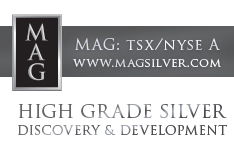Experts' view toward oil has shifted a bit from about one and a half weeks ago when sentiment, due to a plunge in oil prices, was emphatically bearish and investors hesitated to take new positions in the commodity, Streetwise Reports reported on April 11.
"Oil is a buying opportunity," wrote Keith Kohl, managing editor of Energy & Capital, on April 10. "Oil is STILL incredibly cheap at this level." (WTI crude was nearing US$63/bbl when this article was published.)
The April 9 descent in crude oil prices took West Texas Intermediate (WTI) down to US$57.31 per barrel (US$57.31/bbl) and Brent to US$62.82/bbl. At the time, many analysts lowered their 2025 oil price forecasts based on weaker demand, worsening trade conflicts, and increased OPEC+ production.
Events in the interim, such as Trump's 90-day pause on tariffs on most countries but China, benefitted U.S. oil, noted Kohl, and subsequently, it rallied. As of April 16 it was showing signs of "cautious recovery," noted Bloomberg. At the last market close, on April 17, WTI and Brent were back up, to US$64.68/bbl and US$67.96/bbl, respectively.
Prices Still Too Low
Kohl highlighted that for oil companies to profitably drill new wells in the U.S., they need WTI crude oil between US$60 and US$70/barrel depending on the location, US$65/bbl on average, according to results of a March 31, 2025 energy survey by the Federal Reserve Bank of Dallas. Of the 130 companies that responded to the survey, done earlier this year, 88 were in exploration and production, 42 in oilfield services.
The energy survey "painted a rather horrifying picture of U.S. energy security if oil prices remained in the US$60/bbl range," Energy & Capital's managing editor wrote. "Even at US$60/bbl oil, U.S. oil production growth is in serious jeopardy."
What's more, Kohl wrote, is that these survey data do not take into account concerns about the quality of new U.S.-based wells or the fact that we are approaching the summer driving season when oil demand is the highest. Another consideration is that oil demand worldwide is rising. Last year in the U.S. it exceeded 21,000,000 barrels per day (21 MMbbl/d) and last summer globally, it hit an all-time high of 103.79 MMbbl/d.
Already many U.S. shale companies, on which the needed supply-demand rebalancing will fall, indicated they planned to cut spending and thus, scale back drilling, wrote Bloomberg Opinion columnist Javier Blas on April 7.
ING Think wrote on April 15, "Given falling drilling activity and high decline rates in U.S. shale, it wouldn't take too long for U.S. oil production to start trending lower. So much for 'drill, baby, drill.'"
That said, uncertainty in the oil market remains, the global financial and economic analysts noted. Macroeconomics and oil's fundamentals and prices could shift at any time.
Oil Poised for Big Rally
Technical Analyst Clive Maund wrote on April 11 that oil was poised for a big move up, based on the commodity's charts, specifically the United States Oil Fund LP's (USO:NYSEARCA) chart. According to Maund, USO's chart showed an ascending accumulation line, suggesting that a "potentially big and possibly explosive rally is brewing in oil." Also, the chart showed a "bullish engulfing pattern" on huge volume a few days before Maund's report, which typically marks a reversal.
"This is an indication that Big Money knows something and is positioning itself for a potentially explosive rally," Maund wrote. "What could it be? We don't know, but whatever it is, somebody or something is betting BIG on it."
Gold and oil often rally in tandem, explained Maund, but in the past few weeks, the two have been moving divergently. Gold has been soaring, and oil has been dropping. This trend may portend an upcoming run-up in oil similar to that of gold recently.
Gold has been so expensive compared to oil just one time in the last 50 years, Dominic Frisby of The Flying Frisby newsletter and podcast wrote on April 17. The gold:oil ratio chart, he added, is showing just how cheap oil is right now and sending the message, "Sell gold, buy oil."
Market Outlook Turns More Hopeful
Whereas short-term forecasts for the oil market were dismal after prices fell on April 9, now the outlook is mixed, indicating some optimism, according to an April 17 Reuters article.
On one hand, the hope that the U.S. and the European Union (EU) will resolve trade tensions, and recent additional U.S. sanctions on Iranian oil exports, led to an increase in oil prices.
"Reaching a trade deal with the EU could potentially limit oil demand destruction from Trump's tariffs," Bob Yawger, director of energy futures at Mizuho, told Reuters.
Yet, other factors, such as possible supply increases by OPEC+ and lingering general uncertainty about global oil demand growth could result in price drops, according to the Energy Information Administration's April 10 "Short-Term Energy Outlook" report.
| Want to be the first to know about interesting Oil & Gas - Exploration & Production investment ideas? Sign up to receive the FREE Streetwise Reports' newsletter. | Subscribe |
Important Disclosures:
-
Statements and opinions expressed are the opinions of the author and not of Streetwise Reports, Street Smart, or their officers. The author is wholly responsible for the accuracy of the statements. Streetwise Reports was not paid by the author to publish or syndicate this article. Streetwise Reports requires contributing authors to disclose any shareholdings in, or economic relationships with, companies that they write about. Any disclosures from the author can be found below. Streetwise Reports relies upon the authors to accurately provide this information and Streetwise Reports has no means of verifying its accuracy.
- This article does not constitute investment advice and is not a solicitation for any investment. Streetwise Reports does not render general or specific investment advice and the information on Streetwise Reports should not be considered a recommendation to buy or sell any security. Each reader is encouraged to consult with his or her personal financial adviser and perform their own comprehensive investment research. By opening this page, each reader accepts and agrees to Streetwise Reports' terms of use and full legal disclaimer. Streetwise Reports does not endorse or recommend the business, products, services or securities of any company.
For additional disclosures, please click here.








































